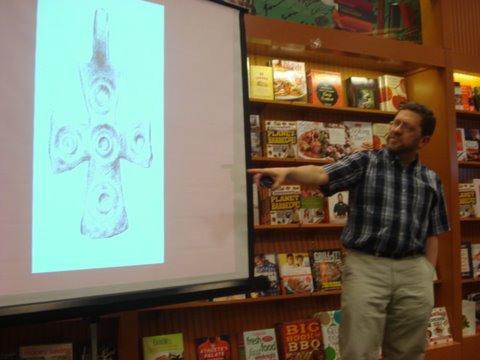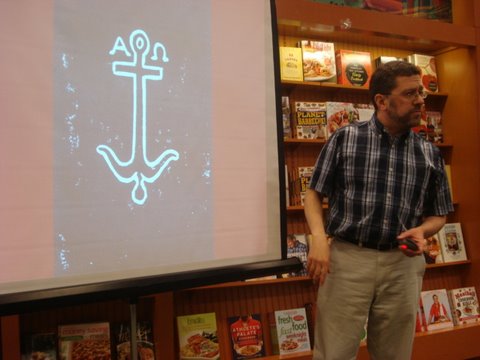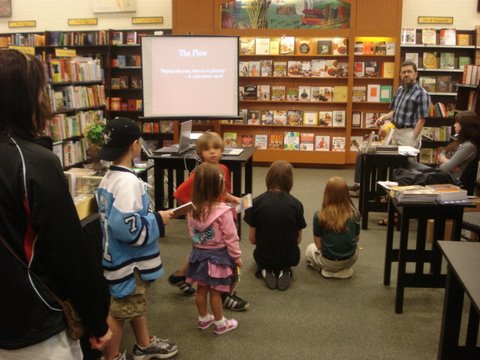Kris McGregor has posted our interview dealing with the ancient Christians’ devotion to the saints. Perfect timing! The topic occupies a chapter in my book Roots of the Faith: From the Church Fathers to You.
Category: Archeology
Medal Machine Music
In the earliest signs of emerging Christian culture, we find beautiful jewelry that bears devotional images: medals, crosses, rings, coins, buckles and clasps, inscribed gems, stamps and seals. Such items are nicely displayed in the book Picturing the Bible: The Earliest Christian Art (a stunning compilation). You’ll often find such ancient artifacts for sale by antiquities dealers. Archeologists have even unearthed the molds and machinery used to strike these images. Some years ago, a reader gave me a medal that the Emperor Constantine struck in memory of his mother, St. Helena. I treasure it.
The art and the craft have endured with the apostolic faith, and we find them practiced well today. I bring this up because my buddy Paul Fry draws our attention to the pious labors of St. Catherine’s Metalworks in the suburbs of Cleveland. Check it out.
Reliquary Roundup
Archeological discoveries (and inventions, Helenesque and otherwise) have been piling up …
Asia Times reports on joint efforts of Israel and the Vatican to excavate, preserve, and promote holy sites.
CNS gives a history (with photos) of Rome’s ancient Mamertine prison, where, according to tradition, St. Peter was incarcerated.
See photos of Psalms inscribed in a cave near Nag Hammadi in Egypt (where the Gnostic cache was found).
The Jerusalem Post visited the Jewish catacombs at Rome’s Villa Torlonia (echoes of my book Signs and Mysteries: Revealing Ancient Christian Symbols, illustrated by Lea Marie Ravotti).
A manuscript found in an Ethiopian monastery could be world’s oldest illustrated Christian work — fourth-century Gospels in Ge’ez.
And I’m sure you’ve read and heard all about the supposed “discovery” of John the Baptist’s relics in Bulgaria.
Going Underground
These are boom times for Christian archeology. While I was writhing with kidney stones last week, I could still enjoy the news of the discovery of the earliest images of the apostles. I thought Catholic News Service’s account was fascinating (here with a postscript here). You’ll find other details and photos, though, in the Daily Mail, CNN, and the BBC.
In related news: CNS posted another neat piece on archeology in Rome. And Bulgarian archeologists think they’re closing in on one of Constantine’s palaces.
Grave Matter
You’ve probably already seen coverage of the discovery of a Roman Era mass grave for unwanted newborns. Roger Pearse has posted a stunning reflection on the “casual evil” of Roman life. You must read it.
It’s not the first such discovery. You’ll find the story of Ashkelon’s sewer clogged with newborns here.
I hope you’ve read Rodney Stark’s The Rise of Christianity, which treats this subject in chilling detail.
The archeologists seem sure that the recent find must have been associated with a brothel. But I’ve seen no evidence to lead to that conclusion. Why pass off on the prostitutes what was acceptable in polite company?
Two Ancient Churches Dug Up in Egypt
Archaeologists working at the Avenue of Sphinxes in Luxor have uncovered the remains of a fifth-century church.
A third-century church has been found at the Monastery of Saint Apollo at Bawit.
Book Binge
BMCR alerts us to new patristic titles:
Ravenna in Late Antiquity, by Deborah Mauskopf Deliyannis.
Byzantine Monuments of Istanbul, by John Freely and Ahmet S. Çakmak.
Orphism and Christianity in Late Antiquity, by Miguel Herrero de Jáuregui.
Old Syria New Again
From the New York Times blogs, news of restoration of Byzantine sites in Aleppo, Syria:
In this ancient fortress city in northern Syria, one of the world’s oldest continuously inhabited settlements, an ambitious restoration project is near completion in the Old City. Bloomberg is reporting that a master plan for development has been laid out for the next 15 years.
I Never Know When Family Will Turn Up
Rogue Classicism leads us to a fascinating Byzantine burial unearthed in Sicily.
Muy BN
Thanks to those of you who’ve written to ask if I’ve died. I haven’t. I have been busy in the Projects, though. And they’re all fascinating projects. The Fall harvest should be very good this year.
Last night, however, I snuck out with my dear daughter Mary Agnes and gave a presentation at a local Barnes & Noble on my book Signs and Mysteries: Revealing Ancient Christian Symbols. It was challenging — probably the youngest audience I’ve ever pitched patristics to. I’ll guess the average age was 12 or so. But what bright kids. By the end of the show, they were decoding inscriptions from the catacombs in seconds flat.
The event was organized elementary-school teacher Zee Ann Poerio, who is author of the “chapter book” A Griffin In Her Desk (about an elementary-school teacher much like Zee). Zee teaches Latin and history using ancient coins and artifacts. She’s amazing.
For Holy Saturday
Archeologists have made some early-Christian selpulchral discoveries in the last couple of weeks.
Twenty Christian sarcophaguses were found in the Urbnisi village of the Kareli region of the Republic of Georgia. They’ve been dated to the fourth or fifth century. I haven’t seen much in the way of detail yet.
A one-ton lead coffin — which has been dubbed the “lead burrito” — was found near Rome. It hasn’t yet been dated; nor have its contents been examined. But experts say its occupant must have been a VIP. A ton of any metal cost a lot of money back then. Beloved Banshee Maureen had some fascinating reflections on the find.
Misspelled, it could prove a useful name for a Tejano heavy-metal group: Led Burrito.
Oxy Envy
At BMCR, Robert Mazza reviews a book I (thanks to his review) want to own: Greetings in the Lord: Early Christians and the Oxyrhynchus Papyri.
The city of Oxyrhynchus has attracted the attention of scholars in early Christian studies since the first archaeological season of Grenfell and Hunt on the site (1896-1897), which, amongst others, brought into light the Greek original of what came to be known about fifty years later as the Gospel of Thomas (P. Oxy. I, 1). From that moment onwards the ancient rubbish heaps of the city have given to us a wide range not only of Christian literature, but also of documents — such as letters, lists and contracts — relating to the everyday life of Christians and Christian institutions in that city and its neighbourhood.
AnneMarie Luijendijk’s “Greetings in the Lord” is an updated and well-structured presentation of the papyrological material relating to early Christianity from the site. The book, mainly addressed to students and scholars in early Christian studies, is divided into three parts (“Meeting Christians at the Marketplace”; “Papa Sotas, Bishop of Oxyrhynchus”; “Legal matters and Government Dealings”), preceded by a general introduction (“Destination Oxyrhynchus: Historical Detective Work in the Footsteps of Monks and Papyrologists”) and ended by a concluding chapter (“Early Christians in the Oxyrhynchus Papyri: New Voices in Ancient History”).
Read on for more detail.
St. Anthony’s Find
Egypt’s Al Ahram is upgrading its site, so it’s redirecting to Google pages. Last week’s edition has a nice piece on “the world’s oldest monastery,” the Monastery of St. Anthony. It’s essentially a rehash of a story that’s a couple months old, but it does include some photos. Egypt’s had some real PR debacles recently — with the weird non-unveiling of Maimonides’ synagogue and the violence at Nag Hammadi. So we’ll probably keep hearing this good-news story again and again.
During restoration work, archaeologists stumbled upon what is believed to be the ruins of the original monks’ living cells dating from the fourth century. The ruins are now protected under a glass floor that leaves it visible to pilgrims.
Grave Matter
In Syria, archeologists are digging patristic-era graves.
Syrian archaeologists working for Damascus Countryside Governorate has announced the unearthing of 5 archaeological graveyards in old Darya City near Damascus, dating back to the 3rd and 4th Century AD.
The discovered graveyards, mostly dating back to the roman and byzantine era, contain tens of skulls, Mahmoud Hamoud, Damascus Countryside archaeology director told local news and media.
Hamoud disclosed that some other findings were also found as part of burial materials, including clay and glass tools, bracelets, rings, ring-bells, beads, eardrops, made of bronze, iron, glass, wood, and precious stones, as well as eardrops made of gold.
Earlier, Damascus Countryside Archaeology Directorate announced the finding of a basalt-built mass graveyard in ‘Ashrafiat Sihnaya’, dating back to same period, with several skulls and other burial materials, made of glass, wood, and metal.
First Thessalonians
Digging for a new metro line in Thessalonika, excavators found a fourth-century basilica.


